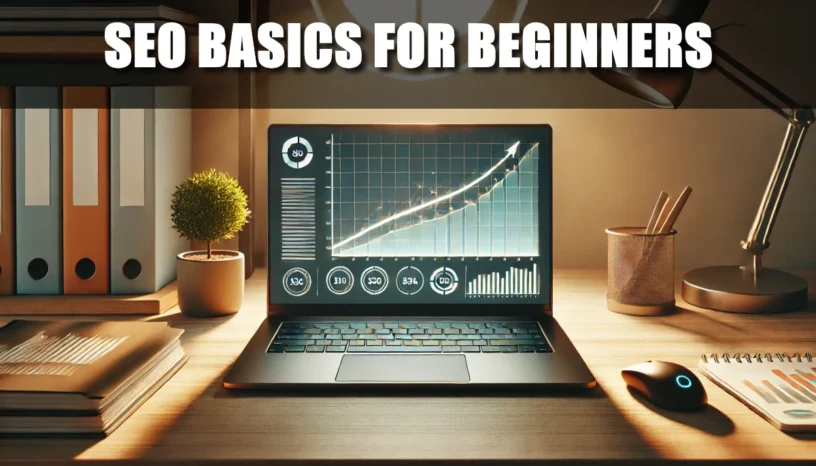Alright, let’s talk SEO. It’s the three-letter acronym that strikes fear into the hearts of many writers. But here’s the good news: you don’t need to be a tech wizard or a marketing guru to get the hang of it. In fact, if you’ve ever Googled yourself (come on, we’ve all done it), you’re already dabbling in the world of SEO. So, what do you actually need to know to make your content rank higher without feeling like you’re wading through code? Let’s break it down in plain English, with no jargon overload.
What Is SEO, and Why Should You Care?
Let’s start with the basics. SEO stands for Search Engine Optimisation. It’s like the secret sauce that helps your content show up when someone types a query into Google. Imagine your content is a contestant on a talent show, and SEO is your stage manager making sure the spotlight hits you at the right moment. Without it, you’re singing in the dark.
Why should you care? Because writing great content isn’t enough if no one sees it. SEO helps connect your words with the people who are searching for them. It’s about making friends with the search engines and convincing them that your article deserves a top spot. And let’s face it – everyone wants to be on the first page of Google. The second page? That’s like a ghost town.
Keywords: The Backbone of SEO
Think of keywords as the signposts that guide readers (and search engines) to your content. These are the words and phrases people type into search engines when they’re looking for information. Your job as a content writer is to sprinkle these signposts throughout your article without making it look like you dumped a bag of salt on your fries.
How do you pick the right keywords? Start by thinking about what your target audience might search for. If you’re writing about “how to bake a cake,” you might use keywords like “easy cake recipe,” “best cake for beginners,” or “simple baking tips.” The trick is to use these phrases naturally. Don’t force it – you’re writing for humans, not robots.
Pro tip: Use a mix of short-tail keywords (like “cake recipe”) and long-tail keywords (like “how to make a chocolate cake for beginners”). The long-tail ones might have a lower search volume, but they usually attract readers who are closer to making a decision. This means better engagement, and in some cases, more conversions.
Quality Content: Still King in the SEO World
You’ve heard the saying, “Content is king.” Well, it’s not just a cheesy line from the 90s – it’s the truth. Even with all the SEO tricks in the world, bad content won’t rank well. Search engines like Google are getting smarter, and they can sniff out fluff from a mile away.
So, what does good content look like? It’s useful, and engaging, and answers the reader’s question. If you’re writing about SEO tips for beginners, make sure your article actually gives beginners the tools they need. No one wants to read an article that promises “easy tips” and then dives straight into complex algorithms.
If your content leaves the reader feeling like they’ve gained something valuable, they’re more likely to share it, link to it, and keep coming back. That’s the kind of engagement Google loves to reward.
On-Page Optimisation: The Little Tweaks That Matter
Here’s where you get to play with a few technical aspects of SEO, but don’t worry – you don’t need a computer science degree for this. On-page optimisation is about making adjustments that help search engines understand your content better.
- Title Tags and Meta Descriptions: These are the first things people see in search results, so make them count. Your title should be clear, include a keyword, and give the reader a reason to click. The meta description is your chance to summarise your content in one or two sentences. It’s like the movie trailer for your article – make it enticing.
- Headings (H1, H2, H3): Use headings to break up your content and signal the main points to both readers and search engines. It’s like using chapter titles in a book. They help guide the reader and make the content easier to scan.
- Internal and External Links: Link to other relevant articles on your site (internal links) and credible sources outside your site (external links). It’s like citing your sources in an essay – it builds credibility and helps search engines understand your content’s context.
Mobile Optimisation: Don’t Ignore the Small Screen
Here’s a fact that might surprise you: More than half of all web traffic comes from mobile devices. If your content isn’t mobile-friendly, you’re missing out on a huge audience. Make sure your text is easy to read on a small screen, your images load quickly, and your layout doesn’t turn into a jumbled mess on a phone.
Think of it this way: If your website isn’t mobile-optimised, it’s like inviting guests over and then locking the front door. Don’t make it hard for readers to enjoy your content.
Analytics: The Feedback Loop You Need
You’ve published your article, and now you’re done, right? Not quite. The next step is to track how well it’s performing. This is where tools like Google Analytics come in handy. They let you see how many people are reading your content, how long they stay, and which parts of your site are most popular.
Pay attention to the average session duration or how long they stick around. Longer session durations are a good sign that readers are engaged.
Use this data to tweak and improve your future articles. It’s like getting feedback after a performance – you learn what worked and what didn’t.
Ready to Start Writing?
SEO can feel like a daunting beast at first, but once you get the basics down, it’s not so scary. It’s about writing great content that your readers (and search engines) will love. Remember, you’re not writing for a machine – you’re writing for people who are looking for answers, solutions, or maybe just a good laugh.
So, grab your keyboard, pick your keywords wisely, and start crafting content that stands out. Who knows? Your next article might just be the one that hits the top of the search results.





Leave a Reply